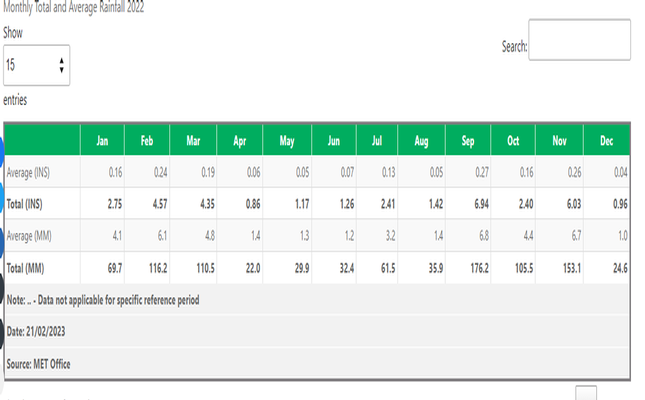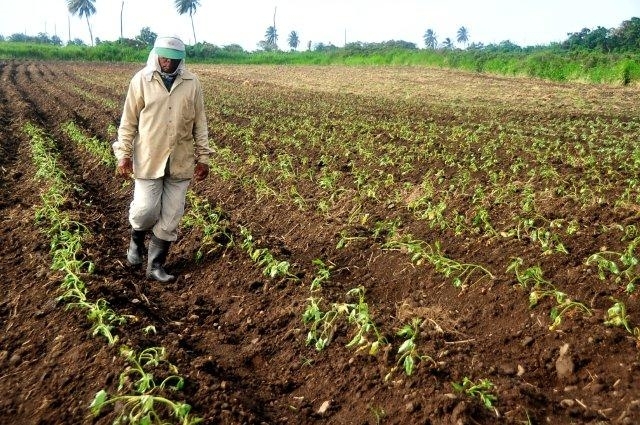Nestled in the Northeastern Caribbean, St. Kitts and Nevis is the small independent state within the Western Hemisphere and continues to boast of many exploits in the area of academics, sports, economy, and infrastructure. But just like many of the territories around it, the Federation is grappling with the pressure of drought and a changing climate on its food supply.
With a population of 53,000 people, the small twin island state continues to battle the elements despite not being among the big carbon emitters, whose footprints continue to affect Small Island Developing States (SIDS).
Farmers in St. Kitts and Nevis are directly feeling the harsh realities of the climate challenges facing the region despite not, in any way, being responsible for the changing conditions, which have brought about altered weather patterns, stronger hurricanes, drought-like conditions, and a decline in crop production.
Over the last decade, there has been a significant drop in the levels of rainfall recorded by the Water Department in Basseterre and that has resulted in periods of water rationing – forcing farmers to make harsh decisionData from the Statistics Department shed light on the water situation for 2022, showing even more stark realities of the impact of climate change on the quantity of rainfall. In 2021, data drew attention to the impact the water challenges were having on farmers and the sector overall.
In Basseterre, on average there is 1200 millimeters of rainfall or an estimated 47 inches recorded annually but for 2021 and 2022 those numbers dropped well below the average. In 2022, 930mm of rainfall was reported whilst in 2021 there was 786mm.

The challenging trend has continued well into 2023, with the depleted rainfall still affecting crop production.
Water Minister Konris Maynard underscored the growing concern, lamenting that for the period “January to May of 2023 we have received just 60% of the amount of rainfall we received for the same period in 2022. This is not good!”
That has resulted in reiterated calls for conservation, as a major part of the potable water supply in and around the island comes from rainfall.
“Consequently, with a 40% reduction for the year we have absolutely no water to spare and not enough water to share”.
Over the past decade, there has been a 20% reduction in rainfall which has resulted in the Federation barely being able to meet its demand capacity. According to officials at the Water Department, St. Kitts has a capacity storage of 7 million gallons water but can only produce 5.6 million gallons of water on a daily basis, while utilising the 7 million gallons per day.
“…That means we cannot produce 24-hour/7 water” Maynard told the nation as the water rationing hit home all across the island.
The low rainfall numbers are compounding an extraction that can lead to another long term problem for the country. Officials have complained that they are at the borderline of salt water intrusion at the various reservoirs because of over extraction, prompting Minister Maynard to emphasize that there is a “need to stop pumping at the current rate”.
So what does this drought mean?
St. Kitts and Nevis is a rainfall-fed country and because of the drought, its old sources of water have begun to dry up and this is putting pressure on the government to find new solutions to alleviate the dry conditions.
Having to balance between the expanding population size and water wastage through leakage, the government is now having to consider new avenues for farmers to receive water and utilize best practices to sustain crop production through the use of shade houses and drip irrigation systems.
The government is pushing to drill new wells and also implement desalination, which are options that were considered for several years but are still to materialize.
During our investigations, Climate Tracker spoke with Anastachia Elliot, Vice President of the St. Kitts Farmers Cooperatives Limited and found that they too have seen a decline in the level of produce being received owing to the water challenges.

The Cooperative would purchase produce from farmers in bulk and then create value added products or find markets, but in recent months they have seen a constant decline in several categories of onions, peppers, and cabbages among other produce.
“To be honest: water. Their big cry is that there is not enough water,” Elliot lamented.
Farmers who go about their daily lives planting crops and rearing livestock, have little to no influence on climate change but are the ones on the frontlines. This is concerning for a small island state like St. Kitts and Nevis because it produces less food than it imports.
The lack of potable water will severely impact the farmers who have lost US$140 million ($66 million in 2021 and US$74million 2022) through the importation of food that they either do not produce or do not produce in abundance due to the decline in water supply.
Government and the challenges of drought
Persistent dry conditions being felt across the Federation is not a good sign, and it is for that reason the Ministry of Agriculture is working to alleviate some of the challenges farmers are facing.
They have, in recent months, sought to provide short term fixes as a stop gap measure as it works toward rolling out its long term plans for dealing with that and other related issues.
Miguel Flemming, Permanent Secretary, spoke with Climate Tracker on the topic and government ‘s assistance to farmers during current extreme dry conditions.
“Even before the dry spell, water has been an issue in agriculture,” confessed Flemming.
To assist farmers, the ministry has undertaken over the years to distribute water storage tanks but that too is a challenge because providing the storage containers without any water is defeating the purpose of the initiative.
In his conversation with Climate Tracker, Fleming emphasized that the ministry has sought to develop new ideas to deal with water issues within the sector as the dry spell “is affecting agriculture in a major way!”
It is against that backdrop the government is working to ensure that farmers utilize best practice and methods to ensure that they preserve water on the farm and in through ground covers and shade houses.
“Some farmers have started to adopt that technology, so when they water [ their plants] it does not quickly evaporate,” revealed Fleming.
The government is said to be working on an emergency response to the challenges to best alleviate the water challenges, but Fleming is not will to disclose the details at this time as it is part of the 25 point plan they are hoping to roll out in July to reduce the high food import bill which stood at US$74 Million.
Discussions are being had between the Departments of Agriculture and Water as a means to better ensure that the sector is being enhanced to meet both the nutritional needs of the public and the food security goals set.
One idea being broached is Hydroponics, which is growing crops using water-based nutrients. But according to Dr. Leighton Narine, a lecturer at the Clarence Fitzroy Bryant College (CFBC), though it is a good alternative, it is a costly venture.
Another suggestion recommended was greenhouses, but Dr. Naraine noted that it comes with its share of challenges.
“We had an innovation where we developed a model that is adaptable to our conditions in the tropics…One of the difficulties though with that system is the cost of setting up the infrastructure. But when we set up a model we set up one that is optimum for what is needed for the fullest extent or to the optimum extent, and then we can do adaptation,” he said while speaking to the Hydroponics topic.
Additionally, a lot of the materials used in the establishment of the hydroponics setup has to be imported, drawing more cost to the farmers.
It is now left to be seen how the local ministry grapples with the current situation which could have major economic and health implications for a territory that has become dependent on imported foods.
This story was published on Sknvibes with the support of the Caribbean Climate Justice Journalism Fellowship, which is a joint venture between Climate Tracker and Open Society Foundations.